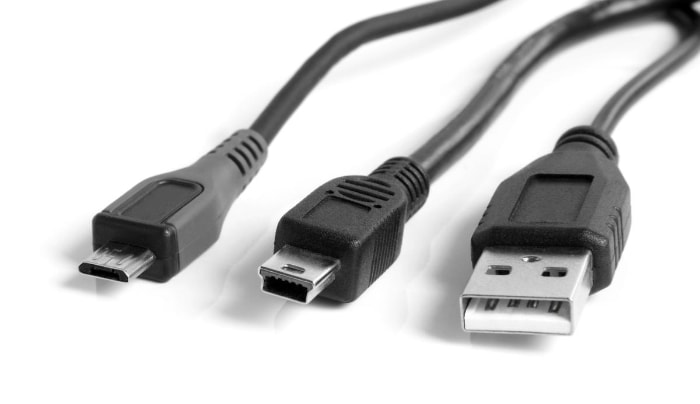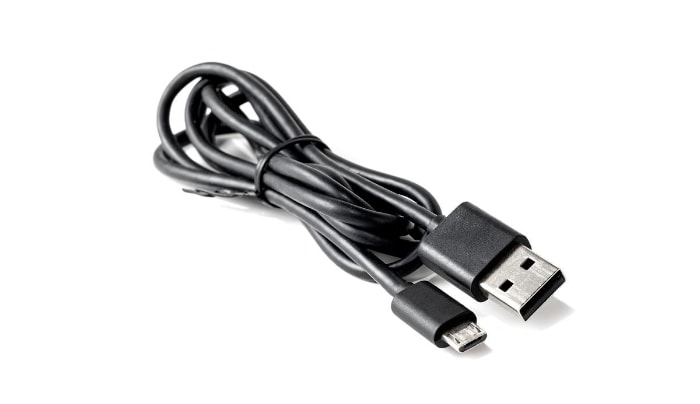Micro USB vs. Mini USB: Decoding Digital Connectivity

Unraveling the intricate world of technology, we often encounter ubiquitous terms such as ‘USB'. However, how often do we stop and ponder about these universal terms that seamlessly connect our digital world? USB, an abbreviation for Universal Serial Bus, is a standard that determines how computers and other devices communicate and share power.
It's essentially the language that our devices use to speak to one another.
Now, amongst the myriad types of USB connectors, two that have captured substantial attention are the Mini USB and the Micro USB. They have become integral components in the functioning of our portable devices like cameras, smartphones, and portable hard drives.
While they may appear quite similar and often create confusion, they possess distinct attributes and cater to specific needs.
A Journey Through the History of USB Standards
In the mid-1990s, a plethora of interfaces like serial ports, parallel ports, and different types of cables were used to connect devices to computers. Recognizing the need for a more unified and user-friendly interface, a group of seven companies—Compaq, DEC, IBM, Intel, Microsoft, NEC, and Nortel—came together.
Their collaborative efforts gave birth to the Universal Serial Bus, or USB, a game-changer in the realm of computing.
The Evolution of USB Sizes
As technology progressed, so did the demand for smaller, more compact devices. The original USB, now often referred to as the Standard-A USB, was relatively large for these evolving gadgets.
This prompted the development of various USB sizes to accommodate different device form factors. Enter the Mini USB and the Micro USB, both designed to cater to the ever-shrinking sizes of digital devices.
Introduction to Mini and Micro USB
Mini USB: Introduced in the early 2000s, Mini USB became popular for smaller devices that found the original USB bulky. However, it was still not compact enough for the emerging ultra-small devices.
Micro USB: To cater to these smaller devices, Micro USB was introduced around 2007. Its smaller size and greater durability quickly made it a favorite among manufacturers, leading to the slow phasing out of the Mini USB.
Thus, understanding the history of USB standards helps us recognize the reasons for the variety we encounter today. It also gives us a glimpse into the constant evolution of technology, continually adapting to our changing needs and preferences.
Exploring the Compact Connector: An In-Depth Look at Mini USB
The Mini USB, often known as USB Mini-B, emerged on the technology scene in the early 2000s as an answer to the need for smaller connectors for compact devices. While maintaining the functional capabilities of the standard USB, it presented a smaller form factor, marking a step forward in the miniaturization of digital devices.
With a size of roughly 7mm x 3mm, it offered a balance between size and functionality, being robust enough to withstand regular use, yet compact enough for smaller devices.
Devices that Use Mini USB
At its height, the Mini USB was commonly found in a variety of devices. These included digital cameras, MP3 players, and some models of mobile phones. Portable hard drives, GPS units, and gaming consoles like the PlayStation 3 controller also used the Mini USB for charging and data transfer.
Weighing the Pros and Cons of Mini USB
Like any technology, the Mini USB had its strengths and weaknesses.
Pros
Compact size: The Mini USB was significantly smaller than the standard USB, making it suitable for smaller, portable devices.
Compatibility: It maintained the data transfer and charging capabilities of the standard USB, making it versatile in use.
Cons
Durability: While more robust than the standard USB, the Mini USB was rated for fewer insertion cycles than its successor, the Micro USB.
Phasing out: With the advent of Micro USB and its superior features, many manufacturers began phasing out Mini USB, making it less common over time.
Understanding the intricacies of Mini USB helps us comprehend its role in the evolution of USB technology. It bridged the gap between the larger, bulkier standard USB and the smaller, more durable Micro USB that we often see in today's digital devices.
Diving into the Tiny Powerhouse: An In-Depth Look at Micro USB

The Micro USB, a significant step in the evolution of USB technology, was developed with the primary aim of standardizing chargers and data transfer devices for mobile devices. Its introduction in 2007 offered a smaller form factor than the Mini USB while also providing enhanced durability.
Rated for 10,000 insertion cycles, the Micro USB was designed to withstand frequent daily use common with portable devices.
Devices that Use Micro USB
Micro USBs have found extensive application across a vast spectrum of devices. From smartphones to tablets, and Bluetooth speakers to power banks, the versatility of Micro USB is evident.
Even devices like digital cameras, GPS units, and certain models of drones utilize this connector type for charging and data transfer.
Pros and Cons of Micro USB
Pros
Size and Durability: Micro USB connectors are smaller and more durable than their Mini USB counterparts, making them better suited to frequent use and allowing for slimmer device designs.
Universality: Since Micro USB became the standard for most smartphones and tablets, it has fostered widespread accessory compatibility.
Cons
Single-sided connection: Unlike the newer USB-C, Micro USB connectors are not reversible, meaning they must be inserted with the correct side up.
Phasing out: With the introduction and increasing popularity of USB-C, the use of Micro USB is gradually declining.
Understanding the Micro USB is integral to grasp its impact on device design and user convenience. The advent of this tiny connector has significantly enhanced the ease and versatility of device interconnectivity, despite its minor drawbacks.
As with any technology, however, progress never halts, and even the robust Micro USB now finds itself slowly yielding to the more advanced USB-C.
Key Differences Between Mini USB and Micro USB
With a clear understanding of both Mini and Micro USB, we can now identify the key differences between these connector types.
A Comparative Glance at Physical Attributes
Size and Shape: Both Mini and Micro USB were designed to fit smaller, portable devices, but the Micro USB is notably smaller and slimmer. This has allowed for even more compact device designs.
Durability: In terms of durability, Micro USB surpasses the Mini USB. It is designed for frequent use, being rated for approximately 10,000 connect-disconnect cycles, while the Mini USB is rated for around 5,000.
Diving into Data Transfer Speed Differences
Despite their differences in size and durability, both Mini USB and Micro USB offer similar data transfer speeds. Both conform to the USB 2.0 standard, providing a maximum transfer rate of 480 Mbps.
Understanding Device Compatibility
While both connector types were used in a wide variety of devices, the smaller and more durable Micro USB became more popular, particularly with mobile phones and tablets. On the other hand, Mini USB was often found in earlier models of digital cameras and portable devices.
Longevity in the Market
While both connector types have played their roles in the evolution of digital devices, Micro USB has shown greater longevity. Despite the advent of more advanced technologies like USB-C, many devices still use Micro USB.
Conversely, Mini USB has been largely phased out and is now less commonly found.
The Transition from Mini USB to Micro USB
The shift from Mini USB to Micro USB was driven by a combination of factors. Predominantly, the smaller size and enhanced durability of Micro USB connectors made them more suitable for modern, compact devices that require frequent charging or data transfer.
Furthermore, the need for a standardized connector across multiple device types encouraged this transition, as the Micro USB became the chosen standard for most mobile devices.
Impact on Consumers
This transition has had both positive and negative implications for consumers. On the positive side, the shift to Micro USB led to the standardization of charging and data transfer cables for many devices.
This has allowed users to use the same cable for multiple devices, reducing clutter and confusion.
However, the shift also meant that devices and accessories using Mini USB connectors became less supported and harder to replace, potentially leading to inconvenience for users of such devices.
The Role of Manufacturers
Manufacturers played a critical role in this transition. By adopting Micro USB as the standard connector for their devices, they not only provided consumers with more robust and versatile technology but also facilitated the phase-out of the less durable and bulkier Mini USB.
This commitment to improving user experience and adapting to evolving needs continues to drive advancements in USB technology.
Looking Ahead: The Future of USB Technology
Having explored the history and current landscape of USB technology, it's time to gaze into the future. As we speculate on the developments to come, we can prepare ourselves for the next wave of changes in USB technology and digital connectivity at large.
The Rise of USB-C
With its reversible plug orientation and the capability to carry significantly more power and data, USB-C is gradually becoming the new standard in the realm of USB technology. Its versatility and user-friendly design make it suitable for a wide range of devices, from smartphones and laptops to audio-visual equipment and power delivery systems.
The Potential Impact on Micro and Mini USB
As USB-C gains popularity, we can anticipate a further decline in the use of Micro and Mini USB. While Micro USB still maintains a significant presence in the market, it's likely to be progressively replaced by USB-C due to the latter's superior capabilities.
Expectations for Future Developments
Looking to the future, we can expect further advancements in USB technology. These may include improvements in data transfer rates, increased power delivery capabilities, and even further enhancements in connector durability and user-friendly design.
The future of USB technology is likely to be shaped by a combination of factors, including technological advancements, user needs, and industry trends. While it's challenging to predict precisely how the landscape will evolve, the continual progress we've seen so far suggests an exciting future for this integral aspect of our digital lives.
Adapting to Changes
As consumers, it's essential to stay informed about these technological shifts to make the most out of our digital experiences. Whether it's selecting the right cable for our devices or understanding the capabilities of different connectors, a basic knowledge of USB technology can go a long way in enhancing our interaction with digital devices.
Despite the ongoing advancements, it's important to remember that technologies like Micro and Mini USB played a crucial role in shaping the USB landscape as we know it today. They helped bridge the gap between the original, larger USB connectors and the more advanced, user-friendly designs we see now, marking significant milestones in the evolution of digital connectivity.


